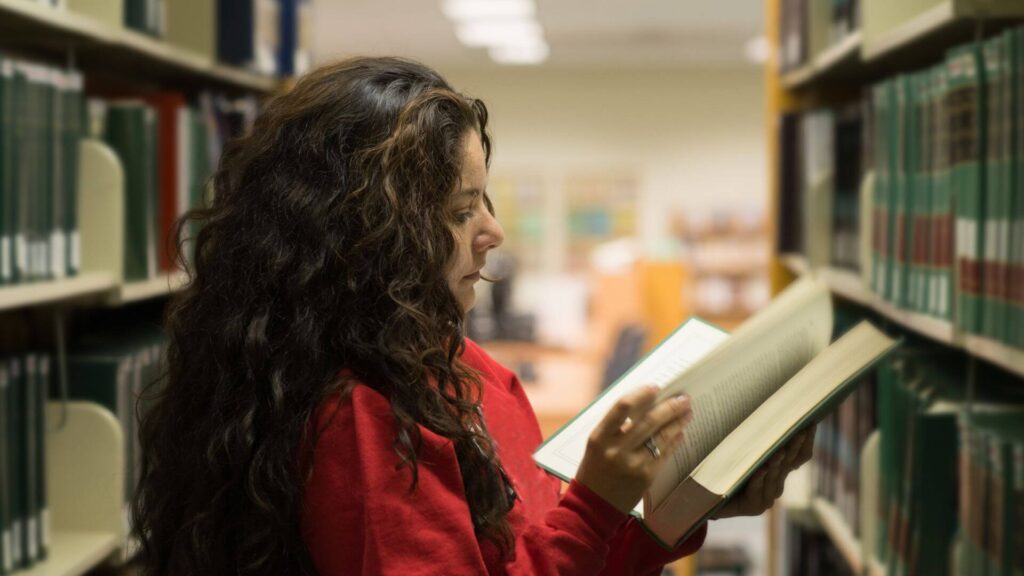There are a lot of techniques and many emerging every day to speed up the reading process. Skimming and scanning techniques are a couple of the conventional methods to help you read more quickly. In this article we’ll discuss about these techniques and also tried to answer why Skimming and scanning techniques are needed in reading.
I remember having a textbook activity in which it was said to skim a given paragraph and then try to answer the questions asked. I did not know then that skimming was actually a reading technique that could make your reading skills better.
Skimming techniques involve reading the content’s titles and subtitles before thoroughly jumping into it. On the other hand, scanning starts with choosing the right content to read, and the rest follows.
In this article, we have discussed in detail the techniques of skimming and scanning, when to make use of them, and if there is really a difference between these two.
Skimming and Scanning Techniques
While scanning is a way to extract what you need from that material, skimming is a technique to decide whether or not you should look into that text in the first place.
Both are speed reading techniques that can improve the rate at which you read gradually over practice.
Why should You Skim

You may only sometimes have plenty of time in your hand to finish reading an article for your essay or a research paper for your work. We are constantly looking for ways to make our daily activities easier. Skimming is one of the ways to ease the process of reading. It is a way to shorten your method of reading.
We must admit that reading and comprehending every part of a text is a time-consuming process. And that too, when you are in the middle of your examination schedule and need more days to cover your syllabus. Imagine the stress you would be under.
The same goes for a report submission on your work too. Reading a whole research paper and summarising what you really need out of that paper is an exhausting process. Trust me, I know.
To ease out all these tasks comes our lifesaver, skimming.
The definition goes as follows.
“Skimming is a strategic, selective reading method in which you focus on the main ideas of a text.” -Learningcentre.com
While skimming, we look for parts of the text that give us an idea about the paper or article. We don’t dive deep into the actual content of the text line by line. Instead, try to get an overall view of the text by looking for titles, subtitles, etc. How we skim is explained in the later part of the article.
How Should You Skim?

Well, there are no steps to follow when you skim, but there are a few ways that you can exploit to skim the text quicker.
1. Start with Titles:
If you are about to read a book, review the chapters’ titles. This will give you an idea of what the book is about. You may get the book’s storyline when you read the chapter names.
2. Go Around with Subtitles:
Read the subheadings if you read other forms of text than books, like articles or papers. It helps arrive at a conclusion about what you will read. It will tell you what the text contains, what it is talking about, and when and how you can read that piece of writing.
3. First Line – First Read:
And if you find no subheadings in the material, go for the first line of each paragraph. It should give you the gist of what that paragraph is about. Do not read them randomly. Read them paragraph by paragraph but not by reading every line.
4. Keep It Short:
If the first sentence is too long, put in little effort to read the whole sentence. You will know what you are about to read in that particular paragraph halfway through your first line. That should be enough for skimming.
5. No Random Reads:
While skimming, do not read the words and phrases here and there. Yes, it is a way of getting an idea of the whole text, but you will need more than just reading random parts of the material. It will leave you confused, and you will have to start reading from the beginning again.
Why Should You Scan?

Forget completing a whole research paper. We all would have been there when we were stuck and tired, failing to find that one article or research paper that would serve the purpose. We would have been tired of looking over and into hundreds of blogs and papers and still needed help finding what we needed.
Googling may sound easier than looking into bundles of actual papers and books, but still, it is a more challenging task. Researching itself is a tedious job sometimes.
How can we quickly narrow it down to that one article? Scan the articles before skimming or reading.
The definition goes as follows,
“Scanning is for searching for specific information in a text format.” Compare what you are looking for with what you have in hand. It will tell you whether or not to look into the material further. This is scanning
How Should You Scan?

Scanning can help only if you already know what you are looking for. Say, you are looking for information about stocks. You can only find what you need if you are sure about what you are searching for.
1. Skim or Scan?
Scanning and skimming are done alternately at every step of reading. Scanning can be done in two ways. Firstly, you can scan several articles to ensure you find the right one. Secondly, scanning that particular article to arrive at the needed information.
The former does not give you details about the content but leaves you to decide whether or not to choose it to read. So, the next step would be to skim the material.
2. Sine Qua Non to Scan:
Before scanning, try to understand what the material is about. After you have skimmed the material, you will know the details in each part of the text. You can go to that part where you think the information you are searching for would lie and look into it.
3. Don’t Make It Complicated:
Scanning is a method little deeper than skimming. Scanning is complex if you do not have an idea about the text. If you are looking for the year of death of the ruler Aurangzeb, you should be sure that the text you are reading has that information. You may not find his death year in an article about his achievements or which is in general about Mughal rulers.
4. Make Sure It’s Worth It!
To ensure whether the material is worth scanning, you need to first skim first, which will give you some overall details about the text in hand.
5. No Random Scans:
Like skimming, scanning should also not be done at random. This will waste your time and energy. Know about the text, and get an idea of how the contents of the text are arranged, helping you figure out the part you need to scan for.
Conclusion | What are Skimming and Scanning Techniques in Reading?
The world is on a clock and so are we. It has become inevitable to fasten even day-to-day activities. As far as reading is taking into consideration, whether to speed read or skim or scan, all these purely depend upon your interest and style of reading. There are no written rules to live your passion. Happy reading!
If you love this article, I’m sure you’ll love reading the article mentioned below:




